When we travel to a foreign or foreign to us destination, do we take the time to learn about the history of where we are at or do we just look for the best bars and where the touring circuit party will be set up? Embracing the culture and learning the history of a destination can only enhance the overall experience. I was recently lucky enough to celebrate our wedding anniversary in a place that is full of history, culture, acceptance, and beauty – Malta.

History
The history of this tiny nation is one of a succession of invasions and waves of cultural influences that have made Malta, and the Maltese, one of the most unique people on the planet. Their language is an exotic mix of long dead vernaculars, beginning with their earliest conquerors, the Phoenicians, who sailed from what is now Lebanon and used Malta as a primary colony as they traded throughout the Mediterranean Sea. It was the Phoenicians who established ‘Mdina as their capital, building the town that still exists today some 5,000 years later. Next came the Carthaginians from what is now Tunisia but at the time was a Greco-Roman power that rivaled ancient Rome. Following the conquest by the Muslim Arabs of North Africa in 827 A.D. the population of the islands added Arab into the blend of their patois, so that Maltese is a curious blend of Arab and the ancient tongues of Carthage and Phoenicia, mixed with a generous smattering of Sicilian. Even its spelling is a strange hybrid. But not to worry, English shares the distinction of being the other official language for the country, due to Great Britain’s control over the islands from the time of Napoleon until it was given its independence in 1964.

Today the 500,000 natives who call Malta home live mainly in an urban sprawl around the “new” medieval fortress capital of Valletta. Impressive stone walls rise up from the crashing surf of the foamy blue Mediterranean and encompass the 0.6 square kilometer fortress of the old town. Along with its neighboring fort of San Angelo the harbor is well guarded. In fact, the impetus for building the new fortress capital of Valletta was to protect the island from another Arab invasion in the 1500s. Given by the Holy Roman Emperor to the retreating Knights of St. John, the island’s harbor was transformed into a series of fortifications. These European medieval Christian knights had left for the Crusades centuries earlier and had formerly been based in Jerusalem to guard the holy sites from the Muslims, until they were defeated and forced ultimately to abandon their redoubt on the island of Rhodes.
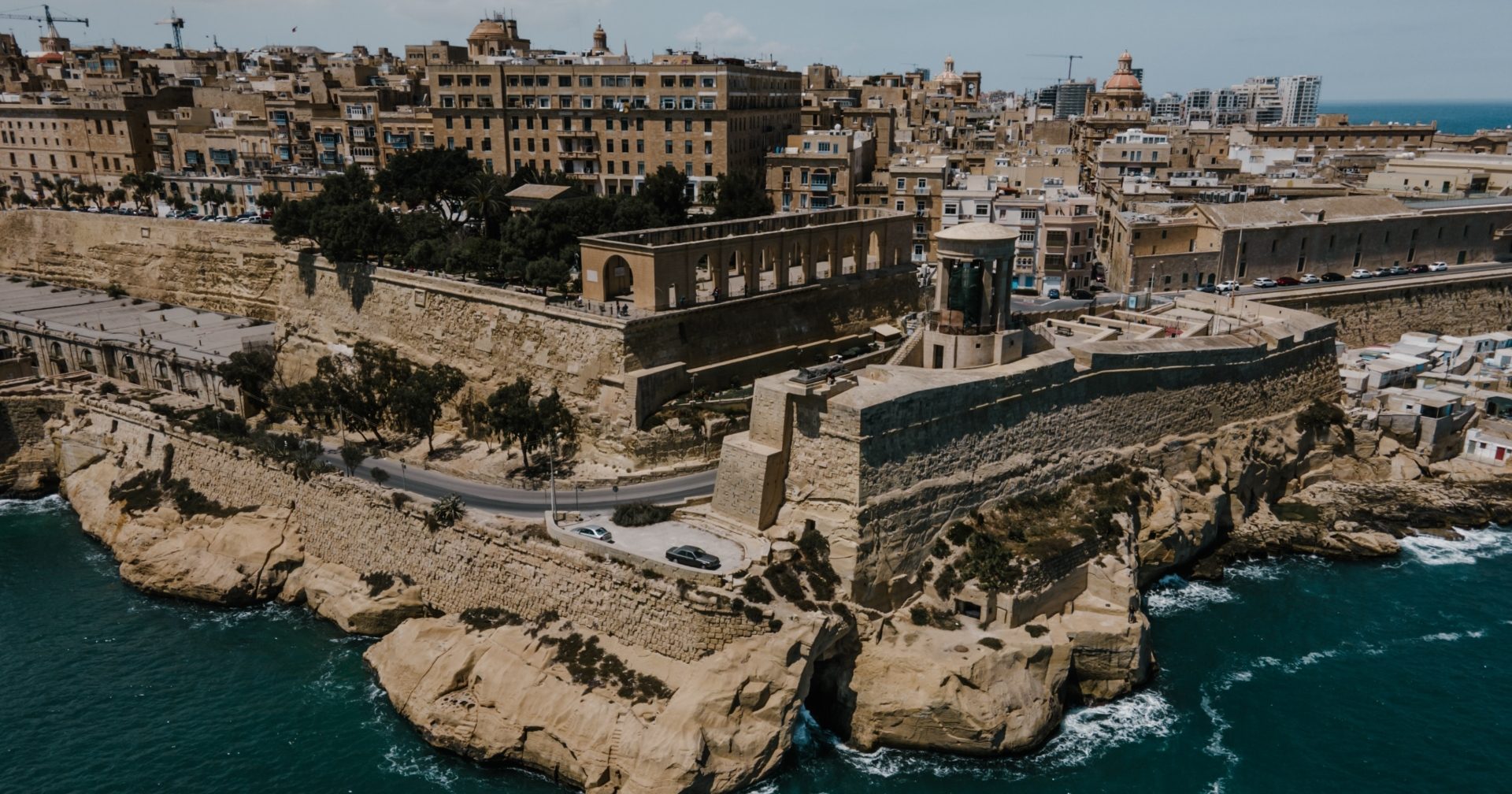
The French Enlightenment philosopher Voltaire said, “Nothing is better than the Siege of Malta.” For Mainland Europe in the 1500s there was a palpable fear of the Muslims over-running the Christian west much as they had already overtaken Constantinople. When the greatest leader of the Ottoman Empire, Suleiman the Magnificent, decided to strike against the tiny island and be rid of the brave Knights of St. John (renamed the Knights of Malta) once and for all, the world watched.
“The Great Siege” of 1565, is one of the greatest stories of an underdog winning against overwhelming odds. Five hundred knights, led by the French Grand Master of the Knights of Malta, Jean Valette (for whom the new capital city was eventually named), recruited townsmen, farmers, and eventually with the aid of reinforcements from Spain and Italy, held back an invading flotilla of 200 ships filled with 40,000 Turkish soldiers and mercenaries.
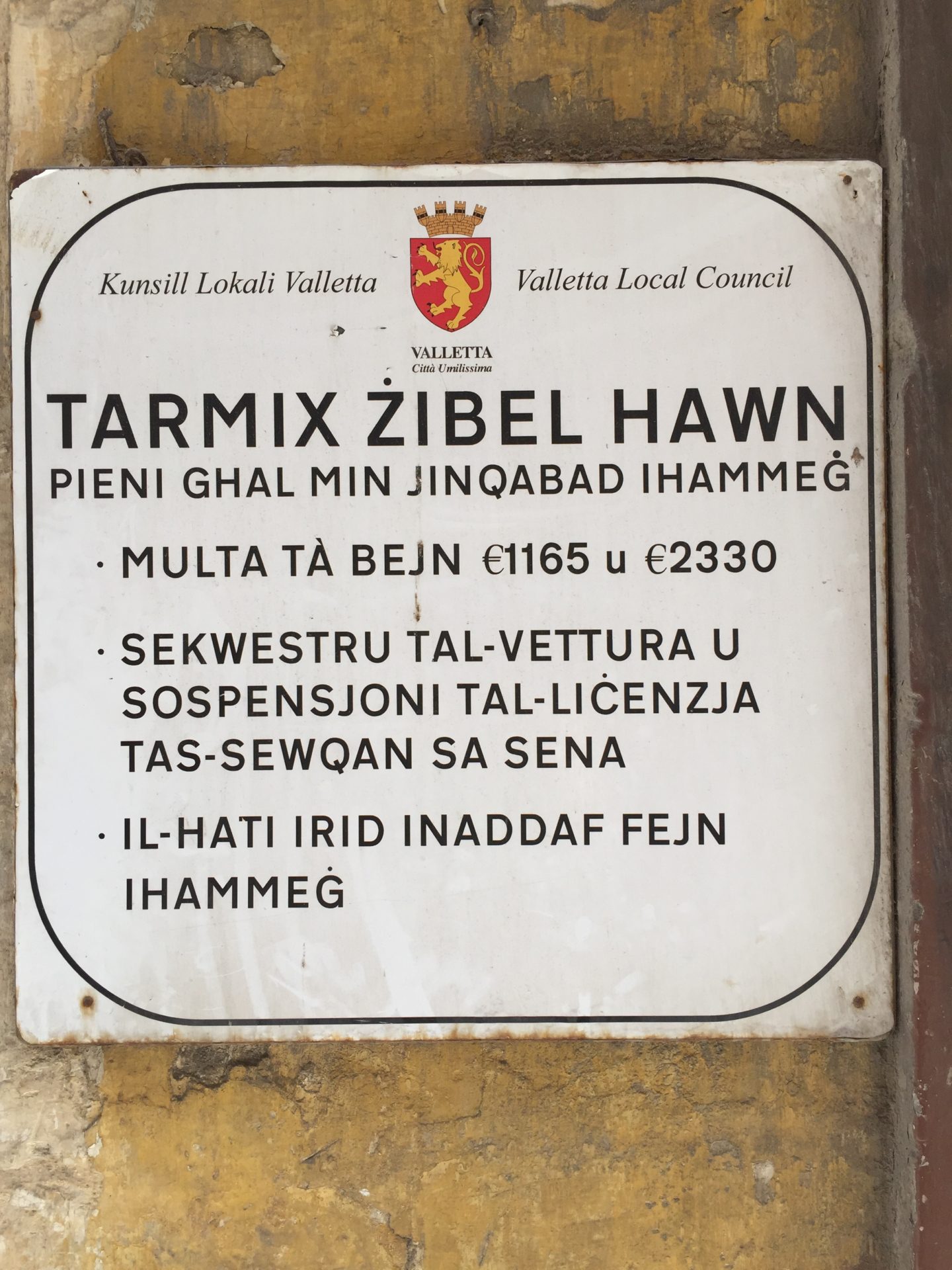
Today’s Valletta is a modern city that has grown up around the fortress town built by Grand Master Valette. His old city is laid out in a grid, allowing cool sea breezes to flow down the nearly kilometer long streets, shaded by tightly stacked stucco and stone buildings. Breathtaking examples of Baroque architecture adorn the city, with cathedrals, churches, palaces, and gardens making Valletta a marvel for wandering around and exploring.
Because of its proximity to its cousin Italy, the cuisine of Malta, while heavily focused on fresh seafood caught daily in the waters nearby, borrows many of the staples of Italian cooking, with pasta, tomatoes, and garlic all generously featured. Dinners are typically al-fresco, with cafes and restaurants setting up their tables outdoors on the cobblestoned streets around 8:00 pm.
Gay Life
Gay life in this extremely Catholic country is visible each September with a raucous gay pride celebration through the streets of Valletta. Otherwise, between the millions of tourists who arrive each summer, and the 20,000+ gay Maltese, the few gay bars scattered throughout Valletta are perfect for an early evening drink before returning to your hotel to freshen up for a leisurely dinner at night.
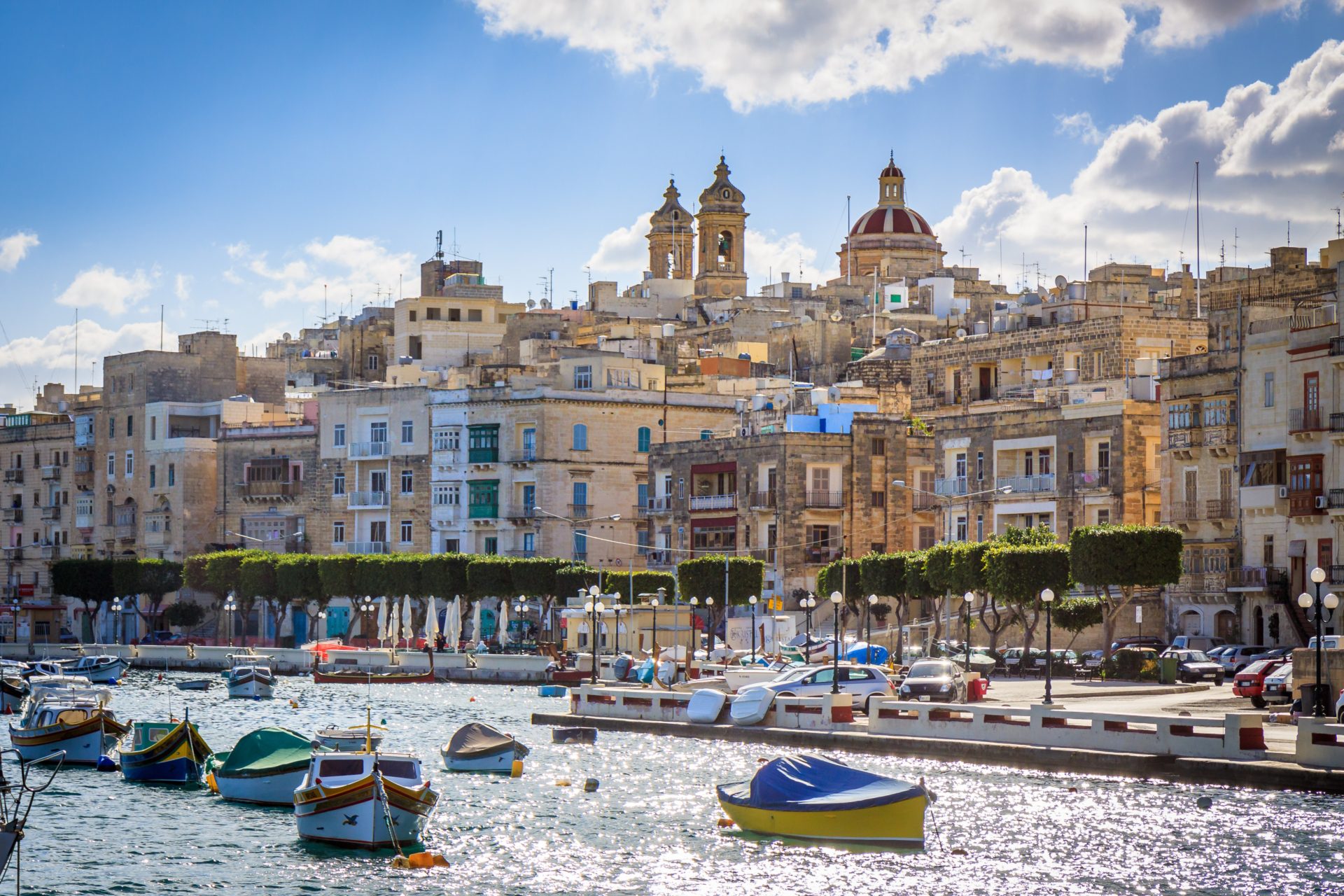
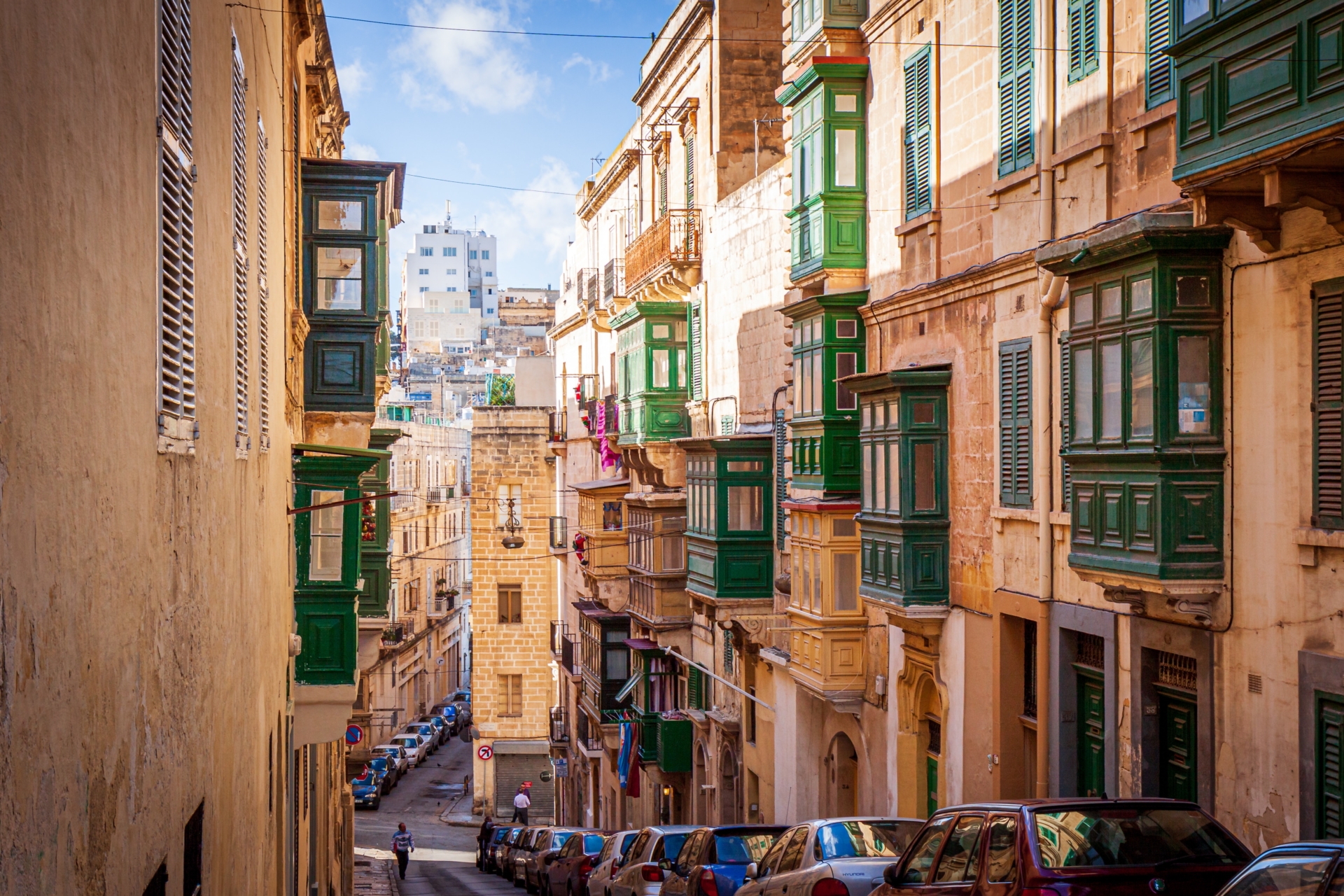
Romance
Our last night in Malta, my husband and I took a city bus from our hotel to the citadel village of ‘Mdina. “Where is the most romantic, charming place to celebrate our wedding anniversary?” we asked several locals. Without hesitation we were assured it was the ancient capital of the island, a rock fortress atop a scraggily hill on this incongruous heap of stones in the middle of the sea. “Go to ‘Mdina.” Its name hinted of mystery, the phonetic knowing wink of familiarity, and it conjured up a dream of medinas in nearby Arab North Africa.
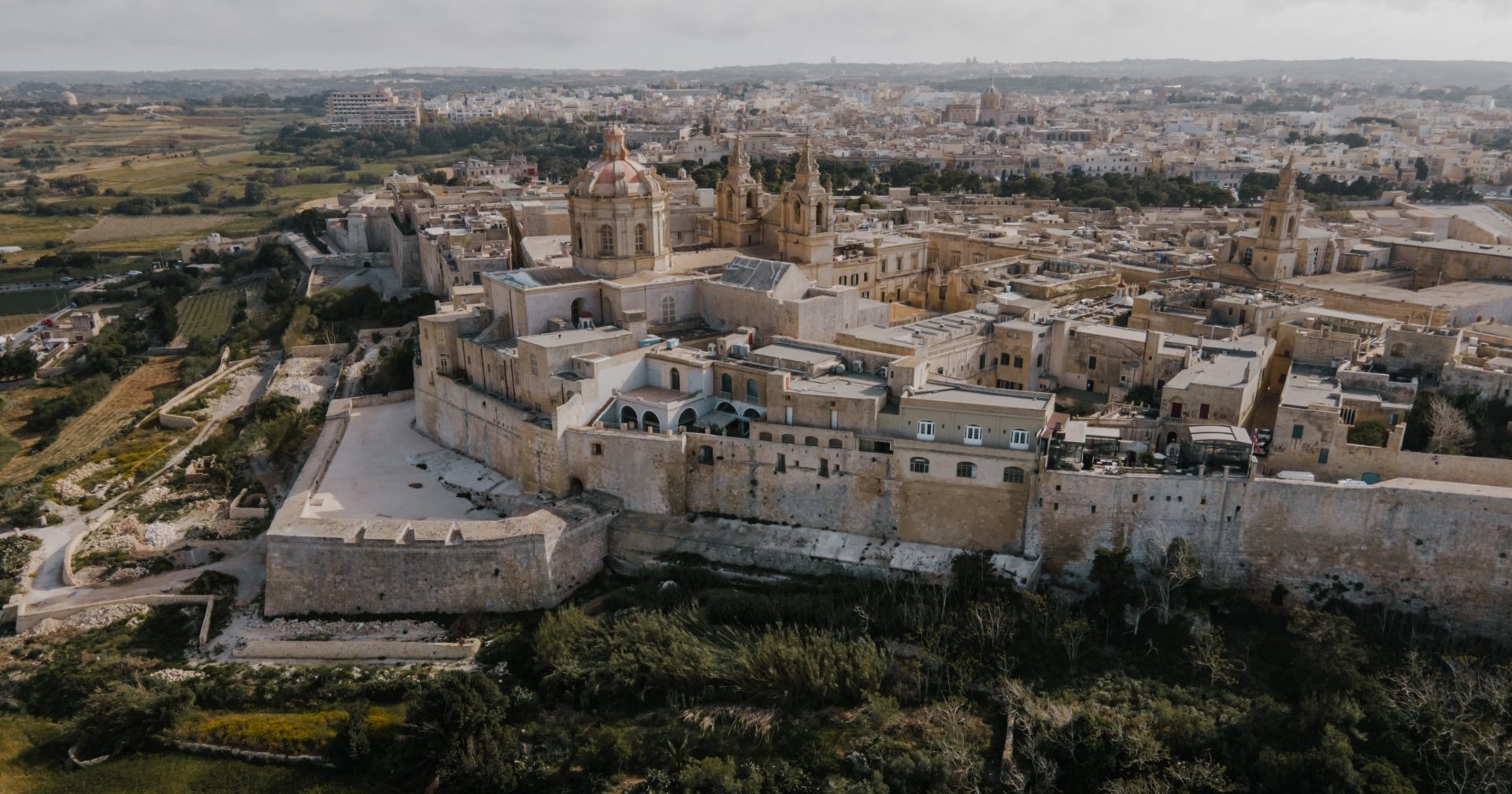
To say that ‘Mdina is old is like saying it gets humid in Florida; it is an understatement. This village is an improbable survivor. Archeologists have dated the first traces of human settlement to around 5,200 B.C.E., when Stone Age humans arrived from Sicily. In pre-historic times there had been a land bridge between the boot of Italy, Sicily, and Malta since the Mediterranean was approximately 135 meters shallower at the end of the last ice age. When these ancient settlers arrived on the shores of Malta they would have found dwarf elephants, dwarf hippos, and giant swans that were eventually forced into extinction by man. In the millennia that followed this settlement, some of the oldest known structures on earth were built, pre-dating the pyramids of Egypt by almost 1,000 years. These impressive temples remain today and are popular tourist destinations.

As for ‘Mdina… it was a truly magical evening. The pink and alabaster tinted palaces and churches shimmered in the dusk of that summer day. Packed together in this tiny walled village, high atop the tallest hill on the island, the buildings seem to each tell a story from its mythic past, and as we dined at a truly marvelous restaurant built on the ancient walls of ‘Mdina, my husband and I toasted each other, paraphrasing Voltaire:
“Nothing is better than a dinner on Malta.”
“This post is solely the opinion of this contributing writer and may not reflect the opinion of other writers, staff, or owners of Instinct Magazine.”
